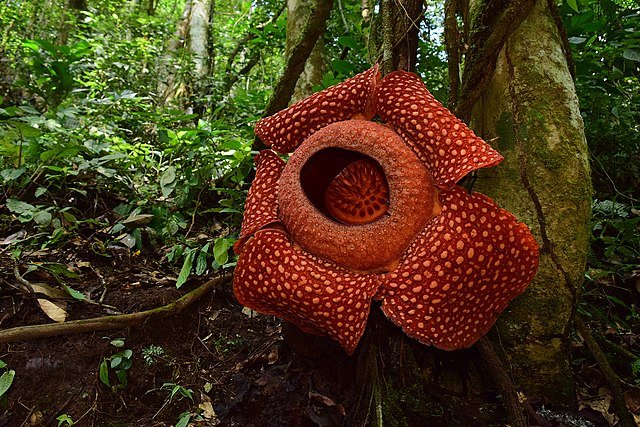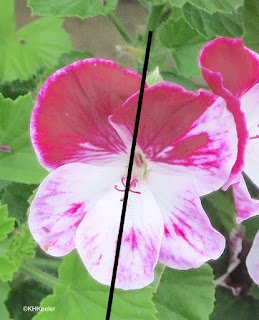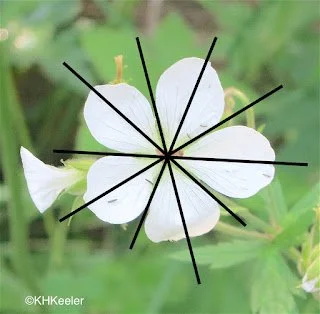The Pelargonium
The story of Pelargonium, how to repel mosquitos with your garden, and why dog's feet smell like chips.
Pelargonium × hortorum
“Odors have a power of persuasion stronger than that of words, appearances, emotions, or will. The persuasive power of an odor cannot be fended off, it enters into us like breath into our lungs, it fills us up, imbues us totally. There is no remedy for it.”
The next time you find yourself with no one looking, take a whiff of your dog’s feet. Don’t be ashamed if you’re suddenly a bit peckish. Curiously, the average canine paw will smell of processed corn chips. What you’re detecting isn’t Fritos, but rather a colorless organic compound, derisively christened putrescence, produced by a colony of gram negative rod shaped bacteria known as Proteus. Proteus is incidental and harmless to the dog, but the coincidental notes of its innocuous bouquet feels odd and strikingly out of place.
As it happens, man’s best friend is just one of many living specimens keen to bushwhack the human nose-hole. To highlight an illustrious alternative, the buttocks of a beaver is reportedly reminiscent of vanilla ice cream. For amusement’s sake, here are 10 more:
The Kentucky Flat Millipede produces cyanide, which somewhat alarmingly, smells like Cherry Coke.
Bearcats (which, it must be said, are neither bears, nor cats) pee a buttered popcorn like urine.
Citronella ants spray lemon drop scented acid. Not advised as a cocktail additive.
White Admiral Butterflies feast on wintergreen and deposit similarly scented excrement.
Spadefoot Toads make a peanut butter-like repellent on their skin
Copperhead snakes and Delta Smelt smack of cucumbers.
The Kakapo, a flightless nocturnal parrot, casts off strong honey notes
The smell of bedbugs, it is said, suggests coriander.
Honeybees, when alarmed, manufacture isoamyl acetate which gives the impression of bananas.
Crested Auklets get a tangerine odor from octantal released as a mating attractant.
This list might offer an impression that unexpected emanations are limited to Animalia, but in fact the botanical world can be just as peculiarly scent-iferous. North American Paw Paw trees and the Bornean Rafflesia, for instance, smell of overripe meat. The Port Wine Magnolia has the fragrance of… banana bubble gum?
Bornean rafflesia quietly emitting putrid meat perfume.
It’s not that it’s unusual for organic matter to smell. Most every living thing manifests some kind of odor, be it pleasant, noxious, or banal. But some things expire smells that surprise; either because they are nostalgic, unforgettable, or just curiously out of place.
Pelargonium, commonly called geranium or storksbill, is a genus of about 280 species of flowering perennials, succulents, and shrubs. Their stems are upright and sturdy, typically bearing five-petaled flowers in umbel-like clusters. They are native to South Africa and Australia and are prized for their long flowering season and hardy disposition. You’ll see them on pretty much every porch in the state of Indiana from June until September. But what nearly all of us refer to as geraniums, are botanically something else entirely.
The confusion between common and hardy geraniums began with Carl Linnaeus. Noticing their seed heads resembled the long pointy soil foraging, cranny probing beaks of wading birds, he erroneously lumped both into a genus he called Geranium (from the Ancient Greek géranos, meaning 'crane’). The name Pelargonium, from the Greek “pelargos” for stork, was proposed by Johann Jacob Dillenius in 1732 for identical reasons. It took Charles L’Héritier, Superintendent of Parisian Waters and Forests, to eventually realize the two plants are sufficiently distinct to merit separation in 1787. Pelargoniums, as a point, are tender in all but very tropical zones and traditionally show bilateral floral symmetry while Geraniums are hardy and radially symmetric.
Fruit and seeds of Geranium rotundifolium. Very crane-ish.
Fruit and seeds of Pelargonium cucullatum. Clearly more storkish.
Common geraniums (Pelargonium) demonstrate single plane or bilateral symmetry, much like us humans.
True geraniums demonstrate radial symmetry like a starfish.
One other and more gratifying peculiarity of Pelargonium sp., and why dog’s feet have brought us to them, is their fortuitous capacity to emit unexpected perfumes, not just from their flowers like most vegetation, but from their skin and leaves too. Give them a rub and volatiles will be relieved through tiny glands, casting a complex bouquet of lemon, lime, rose, mint, pineapple, apple, and nutmeg. It’s surprising and delightful.
Plants like Pelargonium manufacture aromatics for several, albeit less-than-obvious, reasons: pheromones, toxins, antibiotics, and much else. While gratifying to a human nose, the oils of the common geranium serve a defensive purpose, repelling ne’er-do-wells, including certain insects and animals. Pelargonium graveolens, for example, is known to have mosquito-repelling properties, primarily due to a high concentration of the anachronisticly coined geraniol. On the other hand, the so-called “mosquito plant,” Pelargonium citrosum, has ironically little to no repellent prowess despite its name and pleasantly lemon-scented leaves.
Other botanical families produce scented oils in similar ways for disparate reasons. Citrus plants express oils from unique cells called pellucid glands. Pellucid, from the latin derivatives -per (through) and -luccid (clear), refer to the way these glands light up as sun shines through their leaves. Unlike storksbill, we leverage their mechanisms for our own gustatory gratification, as we dress up chicken with sage and thyme (Lamiaceae family), and cocktails with lime, grapefruit, and orange peels (Rutaceae family).
Pellucid glands on a lemon tree leaf, letting the light shine in.
L'Heritier's original manuscript differentiating Pelargonium from Geranium
Knowledge Sources
https://en.wikipedia.org/wiki/Euphorbia
https://en.wikipedia.org/wiki/Paul_Ecke_Ranch
https://en.wikipedia.org/wiki/Poinsettia
https://cactiguide.com/cactiornot/
http://www.euphorbiaceae.org/pages/about_euphorbia.html
https://www.google.com/books/edition/Experiments_and_Observations_on_Differen/wAk8qYhsQ0MC?hl=en&gbpv=1
https://qz.com/emails/quartz-obsession/1482596/simultaneous-invention
https://laidbackgardener.blog/2018/09/19/cactus-or-euphorbia/
https://www.britannica.com/science/oxygen
https://www.rsc.org/periodic-table/element/8/oxygen
https://www.acs.org/education/whatischemistry/landmarks/josephpriestleyoxygen.html
https://education.jlab.org/itselemental/ele008.html
https://en.wikipedia.org/wiki/Oxygen
https://www.beautifulchemistry.net/scheele
https://en.wikipedia.org/wiki/Carl_Wilhelm_Scheele
https://www.frontiersin.org/news/2022/03/18/children-in-science-carl-wilhelm-scheele-the-forgotten-chemist/
https://www.britannica.com/biography/Carl-Wilhelm-Scheele
https://www.britannica.com/science/oxygen
https://www.ncbi.nlm.nih.gov/pmc/articles/PMC4633856/
https://en.wikipedia.org/wiki/Multiple_discovery
https://homework.study.com/explanation/explain-what-is-meant-by-convergent-evolution-provide-an-example.html
https://www.kli.ac.at/webroot/files/file/Workshop%20booklets/33AWTB_kern_final.pdf
https://study.com/academy/lesson/divergent-convergent-evolution-definitions-examples.html
http://khkeeler.blogspot.com/2019/02/plant-story-wild-geraniums-treat-to-see.html
https://www.almanac.com/plants-repel-mosquitoes-and-insects
Image Sources
https://commons.wikimedia.org/wiki/File:Carl_Wilhelm_Scheele.png
https://commons.wikimedia.org/wiki/File:PSM_V05_D400_Joseph_Priestley.jpg
https://commons.wikimedia.org/wiki/File:Euphorbia_enopla_v_české_sb%C3%ADrce.jpg
https://commons.wikimedia.org/wiki/File:Cyathium_cross2_ies_no_letters.jpg
http://khkeeler.blogspot.com/2019/02/plant-story-wild-geraniums-treat-to-see.html
SAplants, CC BY-SA 4.0 <https://creativecommons.org/licenses/by-sa/4.0>, via Wikimedia Commons
Stefan.lefnaer, CC BY-SA 4.0 <https://creativecommons.org/licenses/by-sa/4.0>, via Wikimedia Commons








